
Eugène Delacroix: From Classicism to Romanticism
Eugène Delacroix was a 19th century French painter, considered one of the main exponents of the romantic movement. Born on April 26, 1798, in Charenton-Saint-Maurice, near Paris, France, and died on August 13, 1863, in the same city.
Eugène Delacroix is known for his innovative and emotional approach to painting, characterized by his bold use of color, vigorous brushstrokes and dynamic compositions. His works cover a variety of subjects, including historical scenes, mythology, literature, portraits and landscapes. Some of his most famous paintings include "Liberty Leading the People", which depicts the French Revolution and has become an icon of the struggle for freedom, and "The Death of Sardanapalus", based on the theme of the ancient Assyrian king.
Eugène Delacroix was an influential figure in his time and received several important commissions, including decorative paintings for the Church of Saint-Sulpice in Paris and for the Luxembourg Palace, which houses the French Senate. His work had a great influence on later artists, such as the Impressionists and Symbolists. In addition to being a painter, Eugène Delacroix was also a talented writer, leaving diaries and correspondence that offer insights into his life, thoughts and creative process. His contribution to the history of art is widely recognized and his work continues to be appreciated and studied to this day.
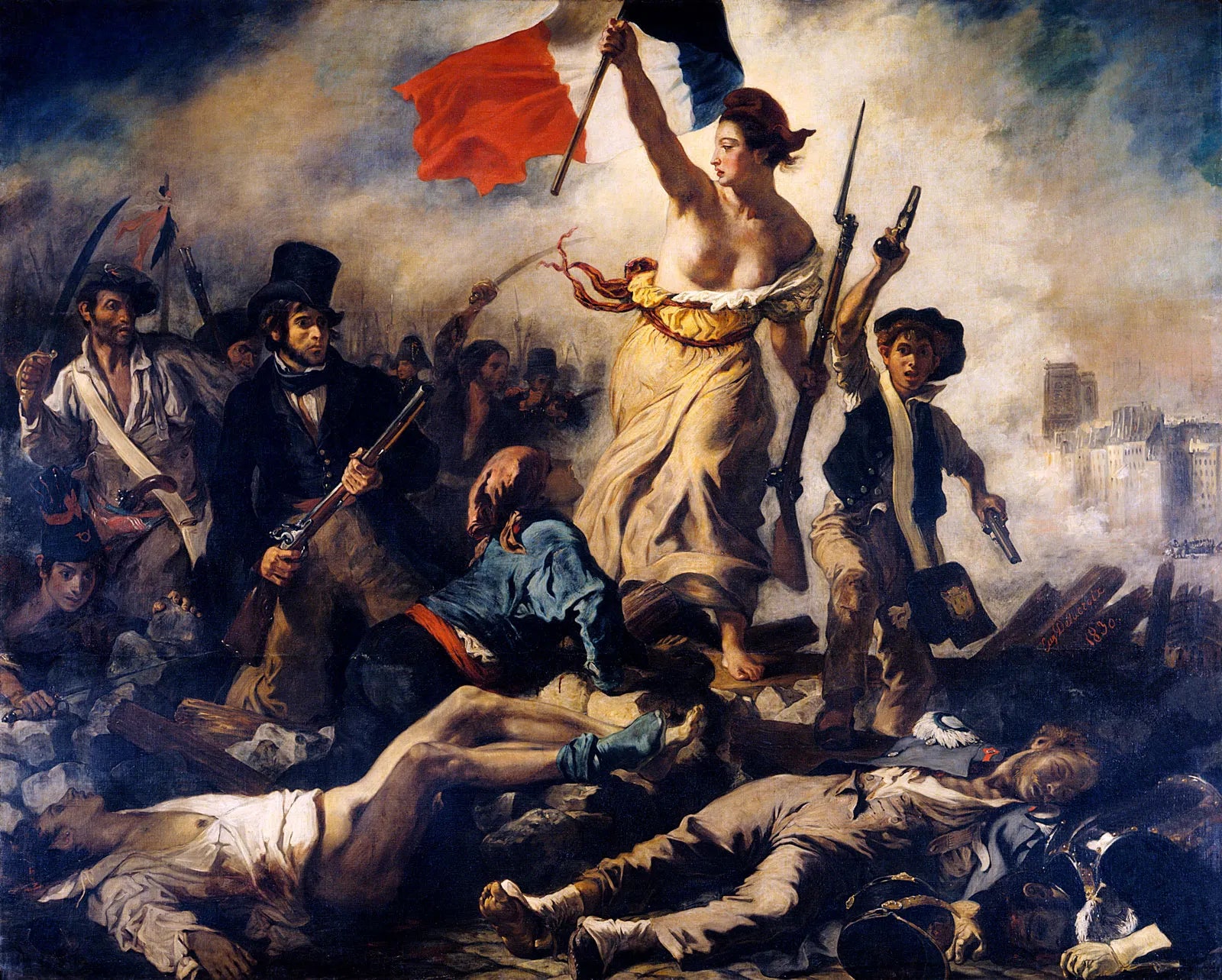
Why did Eugène Delacroix become so famous?
Artistic innovation: Eugène Delacroix introduced an innovative approach to painting, breaking with established conventions. He explored the expressive use of color, vigorous brushstrokes and dynamic compositions, creating a visually impactful and emotionally intense style.
Emotion and subjectivity: Eugène Delacroix's paintings were highly emotive, capturing a wide range of feelings and expressing them in powerful ways. He sought to convey not only the literal representation of the events, but also the experience and emotions that accompanied them, which resonated with the audience.
Significant themes and subjects: Eugène Delacroix addressed historical, mythological, literary and contemporary themes that had social, political and cultural resonance. His works addressed issues of freedom, justice, tradition and revolution, which made them relevant and impactful.
Important commissions: Eugène Delacroix received several prestigious commissions throughout his career, which increased his visibility and status. He painted murals for the Church of Saint-Sulpice and the Luxembourg Palace, in addition to receiving commissions from important art collectors of the time.
Lasting influence: Eugène Delacroix's work exerted a significant influence on later generations of artists. His expressive style, use of color and subjective approach paved the way for the development of later artistic movements such as impressionism and symbolism.
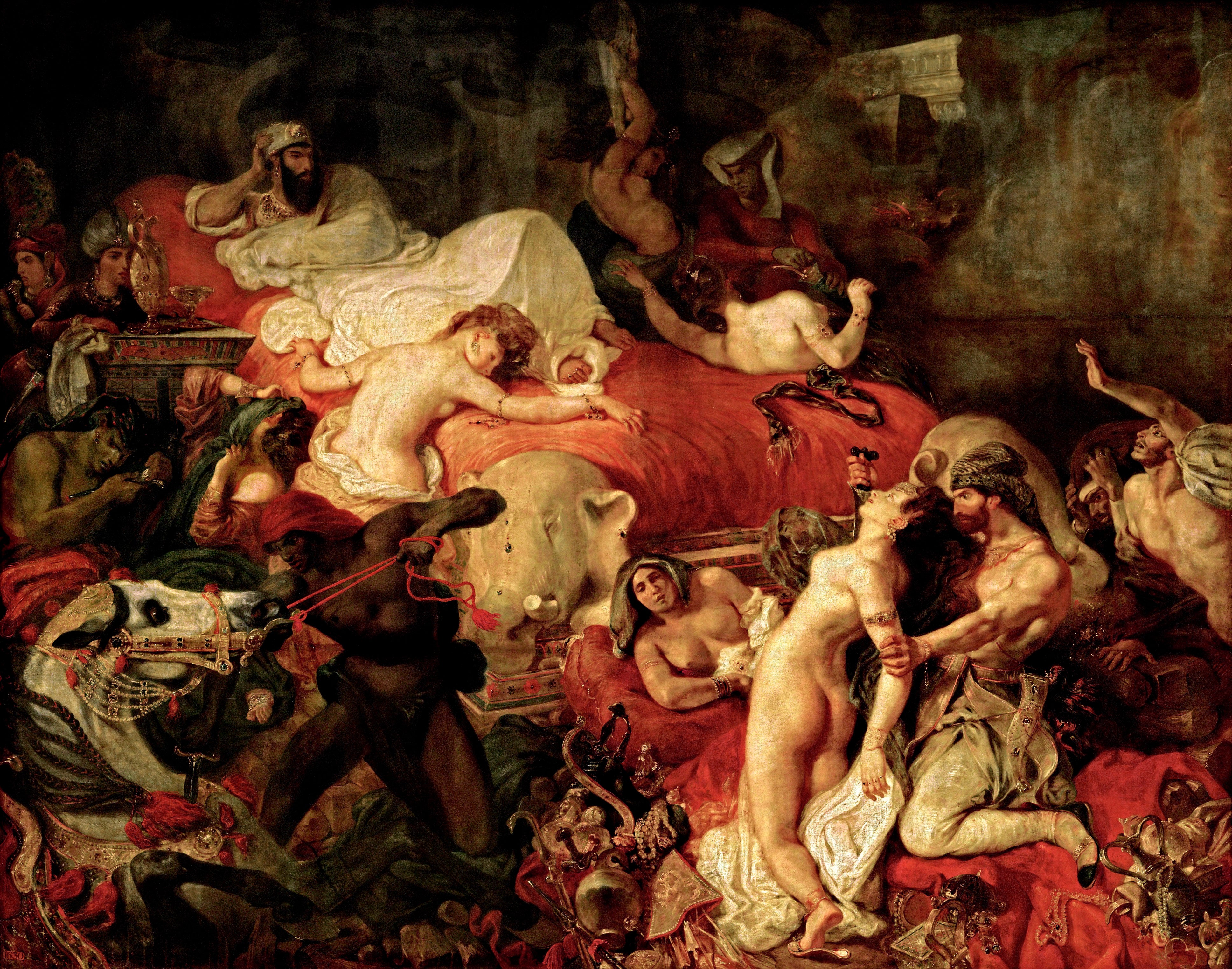
What are the characteristics of Eugène Delacroix's works?
Expressive use of color: Eugène Delacroix was known for his bold and vibrant approach to color. He used intense and contrasting tones to create dramatic and emotional effects. His palette included bright, bright colors that conveyed a feeling of energy and vitality.
Vigorous strokes: Eugène Delacroix applied the paint loosely and visibly, using expressive, textured brushstrokes. His technique emphasized movement and spontaneity, giving his works a sense of dynamism and emotion.
Dynamic compositions: Delacroix's paintings often featured complex, action-packed compositions. In fact, he was a master at creating busy scenes, full of characters in dramatic poses and expressive gestures. His compositions were often asymmetrical and diagonal, creating a sense of tension and movement.
Exotic and historical themes: Eugène Delacroix explored a variety of themes in his works, including historical scenes, mythology, literature and contemporary events. He was particularly fascinated by the exotic and orientalism, depicting scenes from North Africa and the Middle East in vivid detail.
Emotion and subjectivity: Delacroix's work was quite emotional and subjective. It sought to convey not only a literal representation of events, but also the experience and emotions that accompanied those events. His paintings evoked passion, tragedy, heroism and a range of intense human feelings.
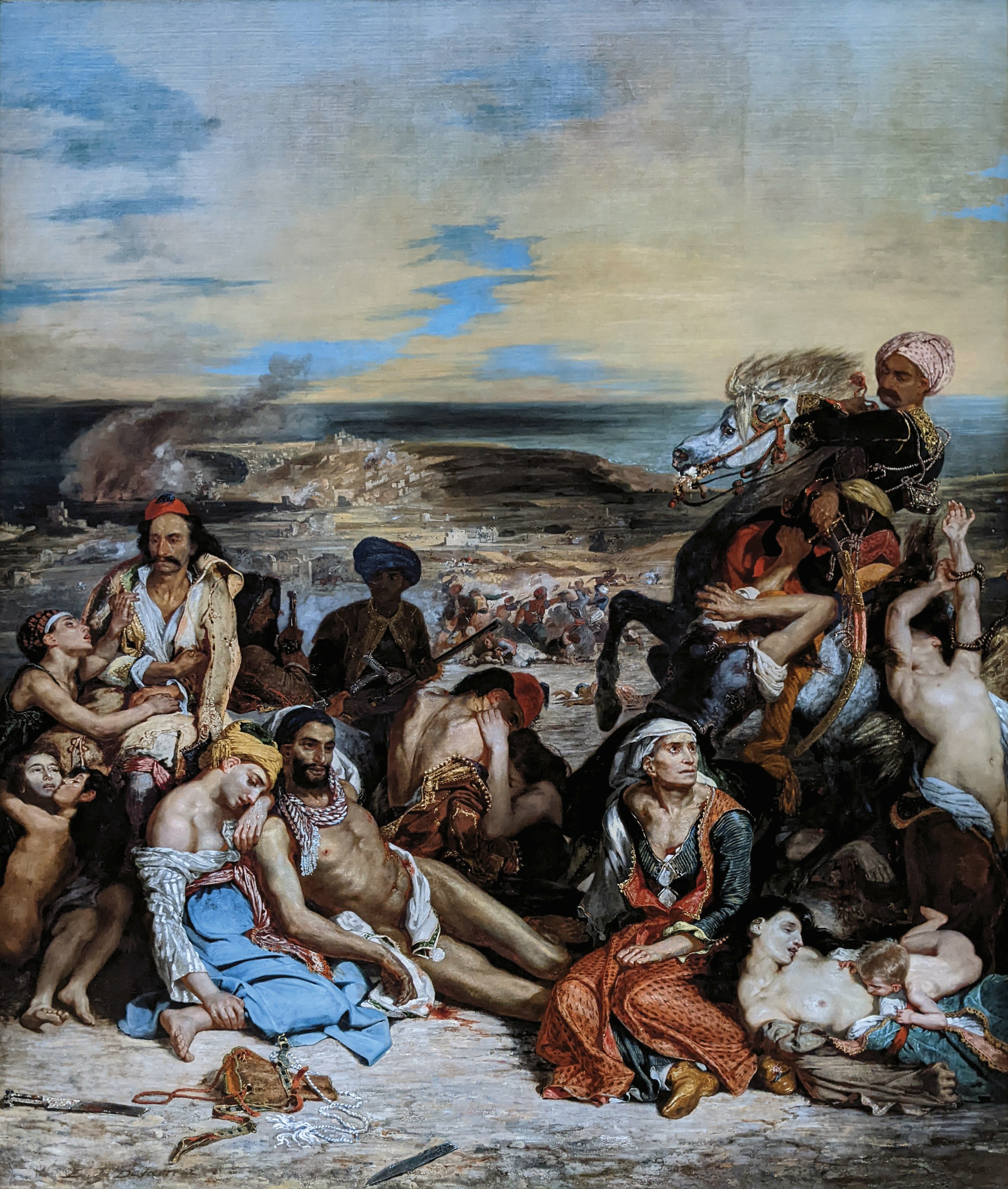
What were the influences of the artist Eugène Delacroix?
Historical painting: Eugène Delacroix was deeply influenced by the tradition of history painting, which sought to represent important historical events and figures. He admired artists such as Peter Paul Rubens and Paolo Veronese, whose works featured grand compositions, dramatic use of color, and a sense of movement and energy.
Classical art and Renaissance: Eugène Delacroix studied the masters of classical and Renaissance art, such as Michelangelo, Raphael and Titian. He appreciated his technical skill, use of anatomy and idealized representation of the human body. These influences are reflected in his approach to form and the human figure in his paintings.
Literary romanticism: Eugène Delacroix was an avid reader and found inspiration in the works of romantic writers such as William Shakespeare, Lord Byron and Johann Wolfgang von Goethe. He captured the emotional intensity and dramatic narrative found in romantic literature in his own paintings.
Oriental and exotic art: Eugène Delacroix was influenced by the art and culture of the East, which was a source of fascination for many 19th century artists. He admired the exuberance of colors and the richness of details found in oriental art, as well as the representation of exotic and historical scenes.
Baroque and Rococo art: Eugène Delacroix had an affinity for the Baroque and Rococo aesthetic, with its theatrical compositions, play of light and shadow, and ornate details. He incorporated elements of these styles into his own paintings, especially in his works with religious and mythological themes. Although he was influenced by several sources, Eugène Delacroix also developed a unique and distinctive style, combining elements of his influences with his own artistic vision. His expressive and emotional approach to painting made him one of the main representatives of the romantic movement in art.
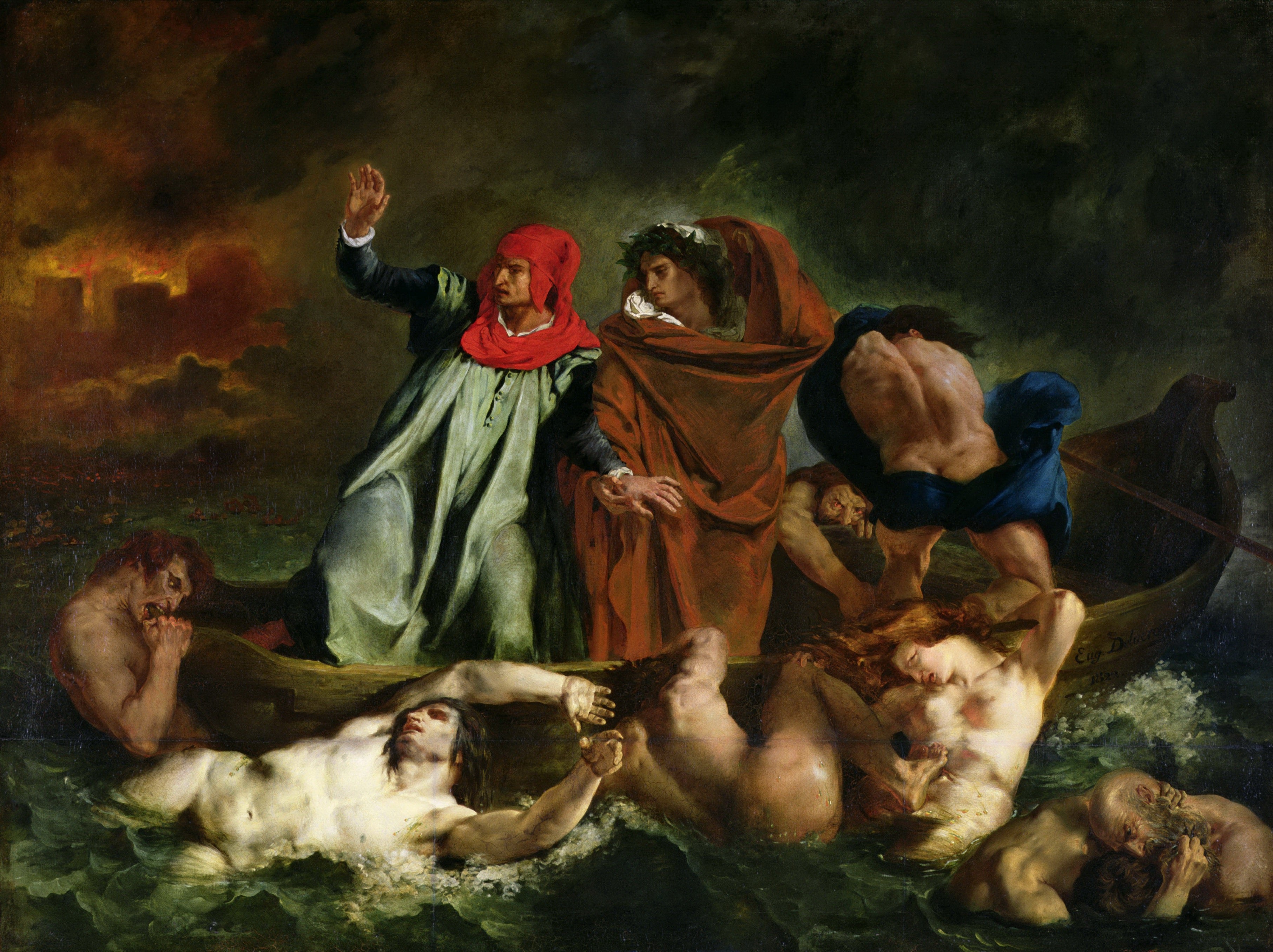
What are Eugène Delacroix's most famous works?
"Liberty Leading the People" (1830): Perhaps Delacroix's most famous work, it depicts an allegorical figure of Liberty freeing the people during the July Revolution of 1830 in France. It is a powerful symbol of the struggle for freedom and the popular revolution.
"The Death of Sardanapalus" (1827): Based on the theme of the ancient Assyrian king Sardanapalus, it shows a time of tragedy and decadence. The painting is known for its complex composition, dramatic use of color and expressive brushstrokes.
"The Barque of Dante" (1822): Based on Dante Alighieri's "Divine Comedy", the painting depicts the moment when the Italian poet Dante and his guide Virgil cross the River Styx in a boat. It is a dark and impactful representation of hell.
"The Massacre at Chios" (1824): Based on an episode from the Greek War of Independence, the painting depicts the tragedy and violence of the massacre perpetrated by Ottoman forces on the island of Chios. It is an example of Eugène Delacroix's political and social involvement in his works.
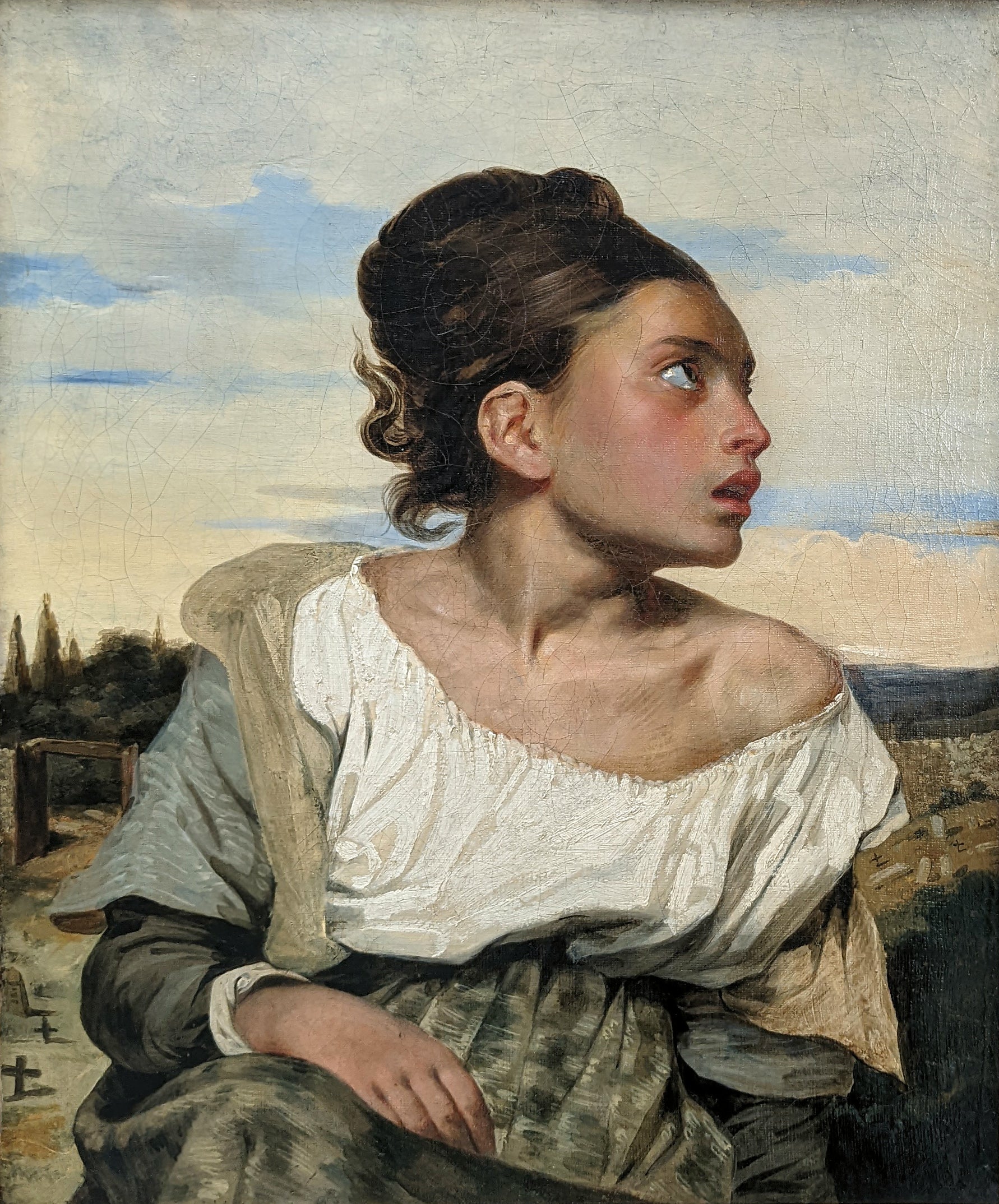
What is Eugène Delacroix's legacy?
Artistic influence: Eugène Delacroix was one of the leading artists of the Romantic movement and his innovative and expressive approach to painting had a lasting impact on art history. It influenced and inspired later generations of artists, including the Impressionists and Symbolists. His bold use of color, vigorous brushstrokes and dynamic compositions opened new aesthetic and emotional paths.
Renewal of historical painting: Eugène Delacroix revitalized the genre of history painting, bringing a fresh and emotionally charged approach. His works challenged academic conventions and expanded the narrative and visual possibilities within the genre. It brought a new energy and subjective perspective to the representation of historical events.
Political and social orientation: Eugène Delacroix was politically involved in his time and his paintings reflected his social convictions and concerns. He addressed themes such as freedom, justice and revolution in his works, providing a visual voice for important social and political issues. His art expressed collective emotions and reflected the desires and struggles of the time.
Diaries and correspondence: Eugène Delacroix also left a literary legacy through his diaries and correspondence. His writings provide valuable insights into his life, his artistic vision, his reflections on art and his interactions with other artists and intellectuals of the time. These are an important source for understanding your creative mind and your work process.
Recognition and preservation: Eugène Delacroix's work is widely recognized and valued to this day. His paintings are on display in renowned museums around the world, such as the Louvre Museum in Paris. His influence and legacy continue to be studied and appreciated by art historians, artists and art enthusiasts. Eugène Delacroix's legacy is rooted in his artistic innovation, social involvement and contribution to the development of romantic painting. His influence endures and his work continues to be a source of inspiration for artists and art lovers.

